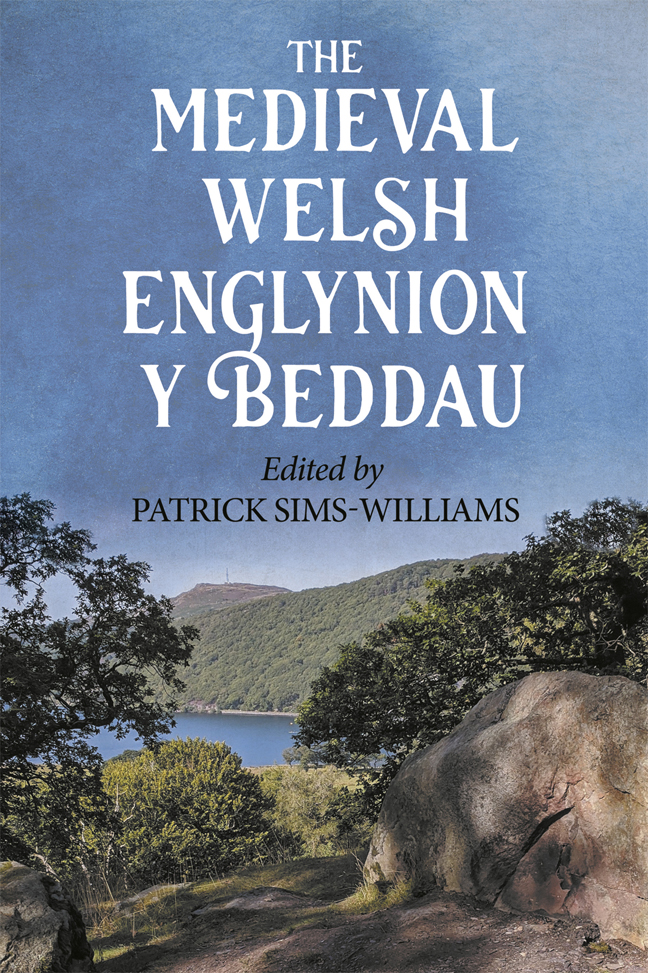 The Medieval Welsh Englynion y Beddau
The Medieval Welsh Englynion y Beddau 5 - Edward Lhwyd’s Index to Englynion y Beddau
Published online by Cambridge University Press: 02 March 2024
Summary
One page of Lhwyd’s copy of Series I and Series III from the lost manuscript of Roger Morris survives as Llanstephan 145, fol. 68. This runs from I.62 (misnumbered ‘63’) to I.72/73 (treated as one stanza, owing to a lacuna, and numbered 73) and is followed by the complete text of Series III (our MS B), numbered from 74 to 91 (but what should be numbered ‘83’ is numbered ‘82’ so that the sequence is … 82, 82, 84 …). Later bound next to it (probably by Moses Williams) as Llanstephan 145, fol. 69, is the index to both series which Lhwyd sent to William Baxter, probably in early 1708. The index was started by Lhwyd (up to H-) and was completed by Williams, his assistant. The latter’s contribution, in a neat cursive hand, is printed in italics below.
Lhwyd’s own orthography is employed in the index, with Greek letters used as follows: χ = ch; δ = dd; ƛ/Λ = ll/Ll; ρ/P = rh/Rh; τ = th. An undotted i may sometimes be iota representing ‘dark y’, and sometimes be the result of forgetting to write a dot; whichever the case, it is transcribed as ı below. There is one example of ʒ for g (s.n. Λuχ) and one ε for e (s.n. Koel).
Alongside the following transcription I give, to the right, the standard numbering of stanzas in Series I (plus the relevant Black Book text) and in Series III. Strikethrough indicates crossings out in the manuscript. On the use of bold and underlining see below.
At least two systems of numbering can be detected behind the index. The Series I numbers in the part mostly written by Lhwyd, from Aber Dyar 55 in col. 1 to Hennyn henben 72 early in col. 2, are mostly one higher than the modern numbering (marked in bold without underlining in the corresponding Black Book citations), with the exceptions of Gurien 2, Guén 3, Aren 4, Auen ab Tede 4, and Bryn Aren 4. Lhwyd originally numbered Dılan Bd. at Λan Beyno (I.4) as ‘5’. The obvious explanation for the ‘5’ is that he originally counted I.4ab and I.4d as two separate items – 4 Tede at Bryn Aren and 5 Dılan – resulting in the subsequent englynion being numbered +1; for example, Aber Guenoli and Guàƛog hír (I.7) are numbered 8 rather than 7.
- Type
- Chapter
- Information
- The Medieval Welsh Englynion y BeddauThe 'Stanzas of the Graves', or 'Graves of the Warriors of the Island of Britain', Attributed to Taliesin, pp. 98 - 109Publisher: Boydell & BrewerPrint publication year: 2023
